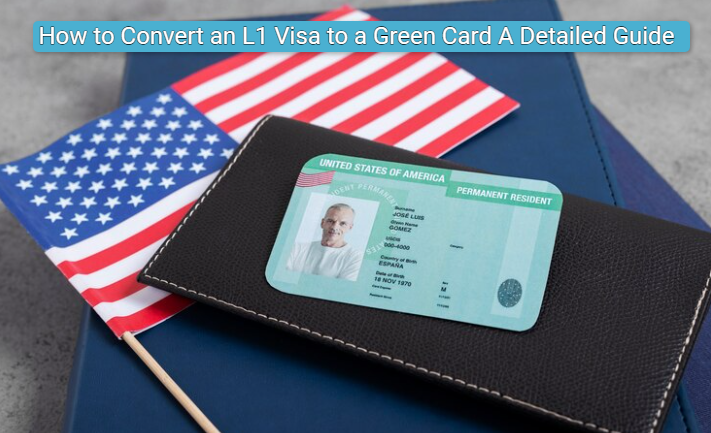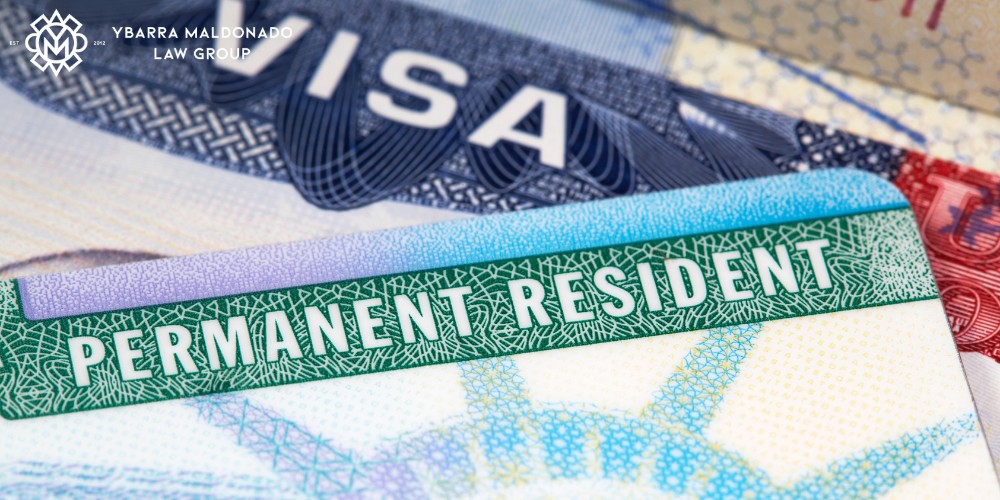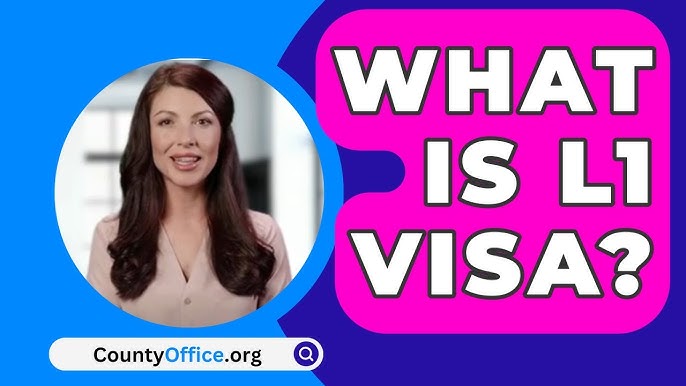Opening Opportunities: A Comprehensive Overview to the L1 Visa Process
The L1 visa procedure presents a crucial path for multinational companies looking for to move vital workers across boundaries. Understanding the subtleties of qualification standards, the distinctions between L-1A and L-1B visas, and the details of the application process can substantially influence a candidate's success. Navigating this facility landscape is not without its obstacles, and mindful attention to documents and company sponsorship is essential. As we explore the crucial components of this procedure, the approaches for overcoming prospective challenges will end up being evident, revealing how educated preparation can open up a globe of possibilities.
Comprehending the L1 Visa
Understanding the L1 visa involves identifying its value as a vital tool for international firms seeking to transfer skilled employees in between worldwide workplaces. This non-immigrant visa category promotes the motion of executives, managers, and specialized knowledge employees to the United States, thereby enabling companies to preserve functional continuity and harness global ability effectively. The L1 visa is separated into 2 primary classifications: L-1A for supervisors and executives, and L-1B for employees having specialized knowledge.The L1 visa serves a vital function in enhancing a business's one-upmanship in the worldwide industry - L1 Visa. By allowing business to move their essential employees, businesses can guarantee that vital jobs are managed by certified people that are currently acquainted with the company's culture and operational procedures. This interior transfer system not just cultivates knowledge sharing but likewise advertises advancement and cooperation throughout borders.Moreover, the L1 visa is frequently preferred for its reasonably straightforward application procedure compared to other visa classifications, as it permits for dual intent, permitting owners to seek permanent residency while on a temporary job visa. This function makes the L1 visa specifically appealing for both companies and employees, as it improves the pathway for skilled professionals to develop lasting residency in the USA
Qualification Criteria
Qualification for the L1 visa hinges on several essential requirements that ensure both the staff member and the employer satisfy particular certifications. This non-immigrant visa is designed for multinational business to transfer workers from foreign offices to U.S. counterparts.Firstly, the employer should be a qualifying company, that includes a moms and dad company, branch, affiliate, or subsidiary of a united state business. The firm has to have been doing business for at the very least one year both in the U.S. and abroad. This ensures that the firm has sufficient functional security and a reputable presence.Secondly, the staff member should hold a supervisory, exec, or specialized understanding position. For L1A visas, the applicant should show supervisory or executive qualifications, while L1B visas concentrate on specialized knowledge pertaining to the organization's products, solutions, or procedures. Additionally, the employee should have worked for the international entity for a minimum of one continuous year within the last 3 years before their application.Lastly, the employee's duty in the U.S. need to align with their previous position, guaranteeing that their skills and competence are leveraged for the company's advantage.
Sorts Of L1 Visas
The L1 visa classification comprises two key types developed to facilitate the transfer of workers within multinational firms: the L1A visa for supervisors and execs, and the L1B visa for employees with specialized understanding. Each type offers unique functions and has specific eligibility criteria.The L1A visa is tailored for people who hold supervisory or executive settings within a company. This visa allows top-level workers to transfer to an U.S. branch, subsidiary, or associate of the exact same organization. Applicants for the L1A visa have to demonstrate that they have been utilized in a supervisory or executive capacity for at the very least one constant year within the previous three years before their application. Furthermore, this visa supplies a longer duration of keep, initially provided for 3 years, with the possibility of expansions for approximately seven years.In contrast, the L1B visa is intended for specialists with specialized expertise related to the firm's products, services, or processes. To certify, applicants should confirm that their knowledge is critical to the organization and that they have benefited at the very least one continual year within the last three years in a function that required this specialized expertise. The L1B visa is at first approved for 3 years, with expansions offered for as much as 5 years.Both visa types are important for business looking for to improve their worldwide operations by leveraging knowledgeable employees, thereby promoting development and effectiveness within the united state market.
Application Process
Guiding with the L1 copyright process involves several important steps that must be diligently complied with to guarantee a successful outcome. The procedure begins with the united state employer, who need to first establish eligibility by showing a certifying partnership with the international entity and confirming that the employee meets the specific requirements for the L1 visa group being sought.Once eligibility is confirmed, the company launches the procedure by filing Kind I-129, the Application for a Nonimmigrant Worker, with the U.S. Citizenship and Migration Provider (USCIS) This kind should be gone along with by a comprehensive description of the task duties to be executed, the business structure of both the united state and foreign entities, and the staff member's certifications. It's essential to verify that all information is accurate and total, as omissions or errors can lead to delays or denials.Upon approval of the I-129 petition, the following action includes the staff member applying for the L1 visa at an U.S. consular office or consulate in their home nation. This stage calls for the conclusion of Form DS-160, the Online Nonimmigrant copyright, and arranging a meeting. During the meeting, the applicant has to present proof supporting their qualifications and the company's petition.After the visa is given, the staff member can go into the United States to function in the designated function. On the whole, mindful prep work and adherence per action of the application procedure are vital for an effective L1 visa outcome.
Required Documentation

Essential Kinds Required
Navigating the L1 Visa process needs careful focus to the essential kinds and documentation essential for a successful application. The key form required is the Form I-129, Request for a Nonimmigrant Worker, which must be completed and sent by the united state company. This type describes the details of the work offer and the qualifications of the worker looking for the L1 Visa.Alongside Type I-129, the candidate will require to total Type I-539 if accompanying household members are likewise making an application for visas. Additionally, the employer has to give evidence of the qualifying relationship in between the U.S. entity and the foreign entity, commonly demanding the submission of company papers such as articles of unification or economic statements.Moreover, it is necessary to include the L Classification Supplement to Form I-129, which defines the kind of L Visa being asked for-- either L-1A for supervisors and execs or L-1B for staff members with specialized understanding. Lastly, applicants must assure that all kinds are signed and dated properly, as insufficient submissions can lead to hold-ups or rejections. Correctly putting together these essential kinds lays the foundation for a smoother L1 copyright procedure.

Sustaining Evidence Demands
Sustaining documents is essential for a successful L1 copyright, as it substantiates the claims made in the application. Applicants must supply a series of records to demonstrate qualification for the visa, which is classified right into 2 key types: proof of the certifying partnership in between the U.S. and foreign entities and evidence of the applicant's qualifications.To establish the partnership, applicants must send documentation such as business organizational charts, financial statements, and proof of ownership. These documents validate that the international company has a certifying partnership with the united state employer, whether as a parent business, subsidiary, branch, or affiliate.For the candidate's certifications, vital records include a detailed work letter from the foreign employer, laying out the applicant's work title, responsibilities, and period of employment. Additionally, instructional credentials, such as levels and diplomas, need to be offered to confirm the applicant's knowledge in the relevant area.
Employer Sponsorship Papers

Typical Difficulties
Maneuvering the L1 visa procedure provides several typical challenges that candidates should know. Key concerns usually include stringent paperwork requirements, potential hold-ups in processing times, and the requirement for rigorous lawful compliance. Understanding these obstacles can help candidates better prepare and mitigate risks throughout their copyright journey.
Paperwork Needs
The L1 copyright procedure often provides substantial obstacles connected to paperwork needs. Applicants need to offer extensive paperwork to develop eligibility, which can lead to confusion and potential delays. Trick records include proof of a qualifying connection in between the U.S. and foreign employer, evidence of the applicant's work background, and comprehensive info regarding the task role in the U.S.One typical challenge is collecting enough evidence to show the nature of the qualifying partnership. Firms frequently have a hard time to present clear organizational graphes or monetary statements that show the connection between the entities. Additionally, guaranteeing that letters of assistance from companies precisely mirror the applicant's work tasks and qualifications is vital, as obscure summaries can lead to denials.Another issue emerges from the need for thorough task summaries that align with the L1 visa groups. Candidates need to verbalize not only their current role however additionally their supervisory or customized expertise duties plainly. This necessitates a comprehensive understanding of both the candidate's placement and the governing language utilized in L1 applications.
Handling Time Hold-ups
Experiencing hold-ups in processing times is an usual challenge encountered by L1 visa applicants, usually causing irritation and unpredictability. Several elements add to these hold-ups, including high application volumes, enhanced scrutiny of applications, and management stockpiles within the U.S. Citizenship and Immigration Services (USCIS) Candidates might locate that processing times can vary greatly relying on the service center managing their application, as each facility has its very own work and efficiency degrees. In addition, the intricacy of the applicant's situation, such as the need for comprehensive paperwork or explanation, can additionally extend wait times.In some circumstances, issues related to the applicant's current immigration status L1 Visa or previous visa background may additionally bring about extra delays, as USCIS may need further evaluation or info. It is important for prospects to continue to be positive during this duration, preserving open interaction with their companies and lawful representatives to attend to any kind of possible problems promptly.Understanding these handling time challenges can assist L1 visa applicants get ready for feasible hold-ups and minimize the effect on their change and job strategies. Patience and diligence are important virtues in maneuvering this detailed procedure.
Legal Conformity Issues
Numerous L1 visa applicants run into legal conformity problems that can complicate their trip toward obtaining the visa. Recognizing and adhering to the specific guidelines established by the U.S. Citizenship and Migration Provider (USCIS) is important. Typical challenges include demonstrating the qualifying connection in between the international and U.S. employers, as well as showing that the applicant has the requisite customized knowledge or supervisory capacity.Additionally, applicants have to give detailed documentation detailing their task duties, corporate framework, and economic viability of the united state entity. Inadequate or unreliable paperwork can cause hold-ups and even denials. Companies should also assure that they conform with labor regulations, consisting of wage and functioning problem requirements, which can impact visa eligibility.Another typical problem includes preserving conformity with the terms of the visa when approved. Adjustments in work status, task obligations, or company framework can necessitate amendments to the visa, which if not attended to quickly can lead to lawful complications. As a result, staying informed regarding conformity requirements and seeking legal guidance when necessary is important to navigate the intricacies of the L1 visa process efficiently.
Tips for Success
Success in the L1 copyright process often depends upon meticulous preparation and attention to detail. To boost your chances of authorization, begin by extensively recognizing the eligibility demands for both the L1A and L1B visa groups. Evaluate whether your position at the firm qualifies as managerial, executive, or specialized understanding, as this categorization notably impacts your application.Next, gather comprehensive documentation that corroborates your cases. This consists of business graphes, thorough task descriptions, and evidence of the firm's operational structure. Clear and concise evidence of the qualifying connection in between the united state entity and the foreign entity is crucial. Confirm that all documents are arranged rationally and presented in a professional fashion, as this mirrors your commitment and seriousness about the application.Engage the solutions of a seasoned immigration attorney who concentrates on L1 visas. Their proficiency can prove very useful, guiding you with facility regulations and ensuring that all documentation follows current regulations. Furthermore, get ready for the interview by practicing response to usual concerns and preparing to discuss your function and payments to the company extensive.
Frequently Asked Questions
Can Family Members Members Go Along With the L1 Visa Holder?
Yes, member of the family of L1 visa holders, consisting of spouses and unmarried youngsters under 21, can accompany the key visa owner. They may additionally obtain L2 visas, which permit them to live in the USA.
For How Long Can I Remain On an L1 Visa?
The L1 visa permits initial stays of as much as three years, with the opportunity of expansion. L1A visa holders may stay for a maximum of 7 years, while L1B visa owners can stay for 5 years.
Can L1 Visa Holders Look For a Permit?
Yes, L1 visa holders can apply for a copyright. L1 Visa. They may pursue permanent residency via employment-based groups, generally needing sponsorship from their employer, provided they meet the essential credentials and paperwork needs
What Occurs if My L1 copyright Is Denied?
If your L1 copyright is refuted, you may obtain a notification outlining the factors for denial. You can seek to appeal the decision, reapply, or explore different visa choices based upon your conditions.
Exist Any Type Of Travel Constraints With an L1 Visa?
An L1 visa typically permits international travel; however, re-entry to the united state rests upon maintaining valid standing. Tourists must guarantee conformity with visa conditions to stay clear of problems upon return
Final thought
